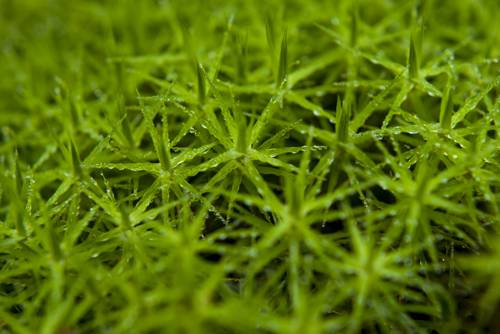
FAQ About Rainforest Mimicry for Indoor Plant Ecosystems

What is rainforest mimicry for indoor plant ecosystems?
Rainforest mimicry for indoor plant ecosystems involves recreating the natural conditions of a rainforest inside your home to help indoor plants thrive. This approach focuses on replicating factors like humidity, light levels, layering of plants, and biodiversity that are naturally found in rainforests.

Why is humidity important for indoor plants in a rainforest mimicry ecosystem?
Humidity is crucial in a rainforest mimicry ecosystem because most rainforest plants are adapted to high humidity levels. Proper humidity helps prevent leaf drying and promotes healthy growth. In these environments, maintaining a humidity level of 60-80% is often ideal.

How can I increase humidity in my home for rainforest plants?
You can increase humidity for rainforest plants using a variety of methods, such as placing a humidifier near your plants, misting plants regularly, placing water trays nearby, or grouping plants together to create a more humid microenvironment.

What are the benefits of layering in creating a rainforest-like ecosystem indoors?
Layering mimics the natural structure of rainforests, with canopy, understory, and forest floor plants each fulfilling different roles. This setup maximizes light absorption and creates microclimates, helping each type of plant to thrive according to its natural requirements.

Which plants are suitable for a canopy layer in an indoor rainforest ecosystem?
For a canopy layer, consider larger indoor plants that can tolerate bright, indirect light, such as Ficus, Monstera, or Dracaena species. These can serve as the 'forest canopy' in your home ecosystem.

What types of plants work well in the understory layer of a rainforest mimicry setup?
In the understory, select plants that favor lower light and higher humidity, such as ferns, calatheas, and philodendrons. These plants thrive in the filtered light and humid environment typical of rainforests.

How can biodiversity be achieved in an indoor plant ecosystem?
To achieve biodiversity in an indoor plant ecosystem, incorporate a variety of plant species with different sizes, shapes, and nutrient needs. This diversity not only mimics the rainforest environment but also helps to create a balanced ecosystem with plants complementing each other.

What role does light play in a rainforest mimicry ecosystem?
Light is a critical factor, and most rainforest plants thrive in bright, indirect light similar to what they would receive under a canopy. Using grow lights or placing plants near north or east-facing windows can replicate these conditions effectively.

Can I use artificial light to simulate rainforest conditions?
Yes, artificial grow lights are an excellent tool to provide the right spectral light that mimics sunlight in rainforest conditions, especially if natural light is limited. Full spectrum LED grow lights are often recommended for this purpose.

What maintenance tips can help support a mimicry ecosystem?
Maintaining a mimicry ecosystem involves regular monitoring of humidity and temperature, consistent watering regimes, and periodic cleaning of plant foliage to facilitate efficient photosynthesis. Observing plants for signs of distress and adjusting conditions accordingly is crucial.

How does temperature impact a rainforest mimicry environment?
Temperature can greatly affect plant health in a mimicry environment. Most rainforest plants thrive in temperatures between 65°F to 80°F. It's important to avoid cold drafts and maintain consistent warmth to prevent stress on the plants.

What pests should I watch out for in a rainforest mimicry system?
Common pests include spider mites, aphids, and mealybugs. High humidity can sometimes foster these pests, so it's important to regularly inspect plants, maintain cleanliness, and use organic pest control methods such as neem oil when necessary.

How crucial is soil type in a rainforest mimicry ecosystem?
Soil choice is vital as it affects water retention and air circulation. Using a well-draining soil mix that retains moisture without becoming waterlogged is preferred. Consider adding perlite or pine bark to improve aeration and drainage.

Can epiphytic plants be included in a rainforest mimicry setup?
Absolutely, epiphytic plants like orchids and bromeliads are excellent additions. They naturally grow on other plants in rainforests and can be mounted on wood or placed in porous pots to mimic their natural growing conditions.

How do I ensure my indoor ecosystem stays balanced without overcrowding?
To avoid overcrowding, limit the number of plants and choose species that have compatible growth rates and size expectations. Regular pruning and reorganizing can help maintain balance and ensure each plant receives adequate light and air circulation.

What common mistakes should I avoid in a rainforest mimicry ecosystem?
Common mistakes include overwatering, insufficient light, inadequate humidity levels, choosing the wrong plant species, and not monitoring plant health. It's vital to thoroughly research plant needs and conditions before setting up your ecosystem.

How does layering affect watering needs in a rainforest mimicry setup?
Layering can create varied watering needs; canopy plants may need less frequent watering due to better light exposure, while understory plants might require more attention. Adjust watering schedules based on each layer's light and airflow.

Is it necessary to fertilize plants in a rainforest mimicry ecosystem?
Fertilizing helps maintain vigorous growth and nutrient levels. Use a balanced, water-soluble fertilizer during the growing season, reducing or halting use in the dormant months to mimic natural cycles.

Can I integrate mosses into my indoor ecosystem?
Mosses are a great addition as they help retain moisture and add a layer of realism to rainforest mimicry ecosystems. They thrive in high humidity and low light, making them perfect for covering soil surfaces or growing between plant layers.

How can I optimize air circulation for my indoor rainforest?
Good air circulation is essential to prevent mold and pests. Use small fans to replicate gentle breezes, ensuring even airflow around plants. Arranging plants with space around them can also facilitate natural air movement.
